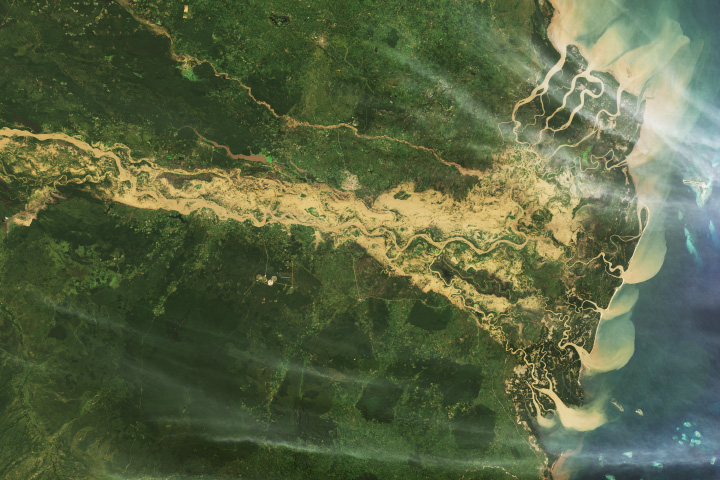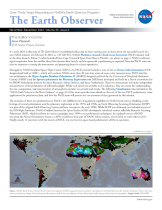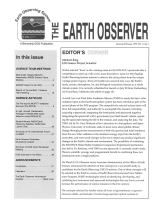- Home
- Missions
- Data
- Communications
- People
- The Earth Observer Newsletter




Recent Imagery
You will be directed to the NASA Visible Earth webpage when you select Images by Mission below, or click on the images at right that are randomly generated to represent four out of all possible topics.
The Earth Observer: Jan - Feb, 1999
In This Issue
Click title below to view page
EDITOR'S CORNER
Michael King, EOS Senior Project Scientist
NASA selected 'Terra' as the winning name for the EOS AM-1 spacecraft after a competition to come up with a new, more descriptive, name for this flagship Earth Observing System mission to observe the entire planet from the unique vantage point of space. Terra will enable new research into ways the Earth's lands, oceans, atmosphere, ice, and biological ecosystems interact as a whole climate system. It is currently scheduled for launch on July 28 from Vandenberg Air Force Base, California (see article on page 10). A small, low-cost Total Solar Irradiance Mission (TSIM) to study the Sun's solar radiation input to the Earth-atmosphere system has been selected as part of the second phase of the EOS program. The competitively selected science team will have full responsibility and authority to accomplish this mission, including acquiring a spacecraft, integrating the instruments and spacecraft together, integrating the spacecraft with a government provided launch vehicle, operating the spacecraft during the life of the mission, and analyzing the data. The TSIM, led by Dr. Gary Rottman of the Laboratory for Atmospheric and Space Physics, University of Colorado, seeks to learn more about global climate change through precise measurements of both the spectral and total irradiance from the sun. Solar radiation is the dominant energy input into the Earth's ecosystem, and even small changes in the sun's output can produce significant changes in the Earth's climate and environment. The possibility of combining the SOLSTICE (Solar Stellar Irradiance Comparison Experiment) instrument, also led by Dr. Rottman, with TSIM on one spacecraft, is currently under study. There is scientific synergy and programmatic benefit to combining these two instruments onto a single platform.
Read more...

